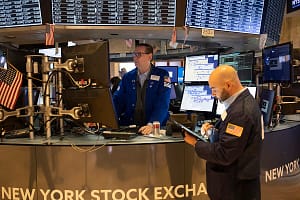The S&P 500 posted an impressive 1.76% rebound in yesterday’s trading session, driven by a recovery in major technology stocks and a more conciliatory stance on tariffs from the administration of President Donald Trump.
Investors welcomed news that the U.S. government might implement tariffs in a more selective manner rather than imposing them broadly across multiple industries.
Specifically, President Trump announced that he would soon unveil new tariffs on automobiles, aluminum, and pharmaceuticals, while also hinting that certain sectors could receive exemptions or face lower-than-expected tariff rates.
This development helped ease concerns about the potential negative impact on supply chains and economic growth, particularly for businesses heavily reliant on imported raw materials. However, markets are still awaiting further details to assess the true extent of these policy measures.
As a result, major technology stocks saw a notable rebound, led by Tesla, which surged nearly 12%, marking its strongest session since November 2024. Meanwhile, Nvidia and Apple rose by 1.13% and 3.15%, respectively, as investors rotated back into growth stocks following a recent market pullback.
The strong recovery in the technology sector, which holds a significant weight in the S&P 500, played a crucial role in driving the index higher. Large-cap stocks such as Nvidia and Apple not only bolstered investor sentiment but also improved the overall market outlook, even as concerns about monetary policy and macroeconomic conditions persist. This suggests that the shift of capital back into risk assets—particularly tech stocks—could continue to be a key driver for the S&P 500 in the coming sessions.
Economic data released yesterday sent mixed signals, but overall, it remained supportive of equities. The Services PMI (March) rose to 54.3, exceeding the forecast of 51.2, indicating continued expansion in business activity and reinforcing confidence in the resilience of the U.S. economy. In contrast, the Manufacturing PMI declined to 49.8, below the expected 51.9, reflecting ongoing struggles in the manufacturing sector due to high input costs and weak demand. However, strength in the services sector may help offset some of the pressure from manufacturing, sustaining a generally positive market sentiment.
Investors should continue monitoring economic and inflationary indicators, as these factors could influence the Federal Reserve’s monetary policy trajectory. If upcoming data reinforces expectations for a more accommodative stance from the Fed, it could further support the market’s recovery.
Today, the market will turn its attention to the CB Consumer Confidence Index (March) and New Home Sales (February) reports. Stronger-than-expected data could boost risk appetite and reinforce the market’s upward momentum. Conversely, weaker numbers may raise concerns about slowing consumer spending and economic growth, potentially weighing on the short-term outlook for the S&P 500.






Leave a Comment